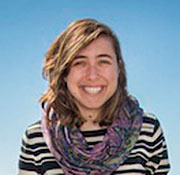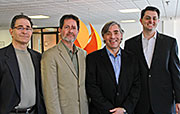What started off as a joke between two undergraduate physics students will soon culminate in an ambitious endeavor called Cycle for Science, a two-woman cycling and science education team that will traverse the U.S. starting April 17. Berkeley Lab research associate Rachel Woods-Robinson and science journalist Elizabeth Case will visit middle schools across the country, teaching fun science lessons and profiling science teachers, all while serving as female role models with the hope of attracting girls to science.
Woods-Robinson and Case met at UCLA and often joked when their physics classes got tough that they should just throw in the towel and bicycle across the country. But they finished their degrees, and Woods-Robinson joined Berkeley Lab as a research associate in the Materials Science Division last March. She’s been working on synthesis and characterization of p-type transparent conducting materials, which can be used in solar cells and optoelectronics. Case is a science journalist in Davis who plans to start her PhD in engineering in the fall.
Full Story
Feature
Nearly a decade ago, a meeting to explore research collaborations between the Department of Energy’s Oak Ridge National Laboratory and the University of Tennessee set the foundation for a company that provides accessible and remote health screenings for patients concerned about diabetic related eye diseases.
That start-up company—launched as AMDx, then called Hubble Telemedical—has been acquired by Welch Allyn, a major medical diagnostic devices manufacturing company that plans to bring the ORNL-UT breakthrough to many more patients.
Full Story
See also…
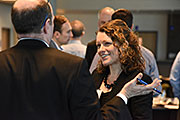 At the heart of the modern energy debate is a struggle between the need for more energy globally, while simultaneously achieving lower emissions. Nuclear energy is uniquely positioned to help respond to these dueling necessities, but innovative advancements must overcome considerable barriers. In general all sides of the polarizing topic agree that the nuclear energy sector could benefit from significant innovation.
At the heart of the modern energy debate is a struggle between the need for more energy globally, while simultaneously achieving lower emissions. Nuclear energy is uniquely positioned to help respond to these dueling necessities, but innovative advancements must overcome considerable barriers. In general all sides of the polarizing topic agree that the nuclear energy sector could benefit from significant innovation. 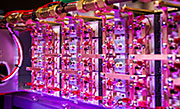 DOE's Lawrence Livermore National Laboratory has installed and commissioned the highest peak power laser diode arrays in the world, representing total peak power of 3.2 megawatts (MW).
DOE's Lawrence Livermore National Laboratory has installed and commissioned the highest peak power laser diode arrays in the world, representing total peak power of 3.2 megawatts (MW).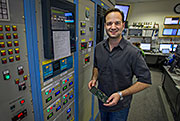 Dennis Perepelitsa, a Brookhaven Lab physicist exploring the mysteries of nuclear physics at the Relativistic Heavy Ion Collider (RHIC) and the Large Hadron Collider (LHC), has the distinction of being the first person to earn outstanding Ph.D. thesis awards from both research communities. His Ph.D. work, based on complementary data collected at the PHENIX and ATLAS detectors at these two particle colliders, showcased intriguing findings that have upturned physicists’ understanding of something they thought they knew well—an ongoing mystery that is guiding part of the research programs at both machines now.
Dennis Perepelitsa, a Brookhaven Lab physicist exploring the mysteries of nuclear physics at the Relativistic Heavy Ion Collider (RHIC) and the Large Hadron Collider (LHC), has the distinction of being the first person to earn outstanding Ph.D. thesis awards from both research communities. His Ph.D. work, based on complementary data collected at the PHENIX and ATLAS detectors at these two particle colliders, showcased intriguing findings that have upturned physicists’ understanding of something they thought they knew well—an ongoing mystery that is guiding part of the research programs at both machines now.